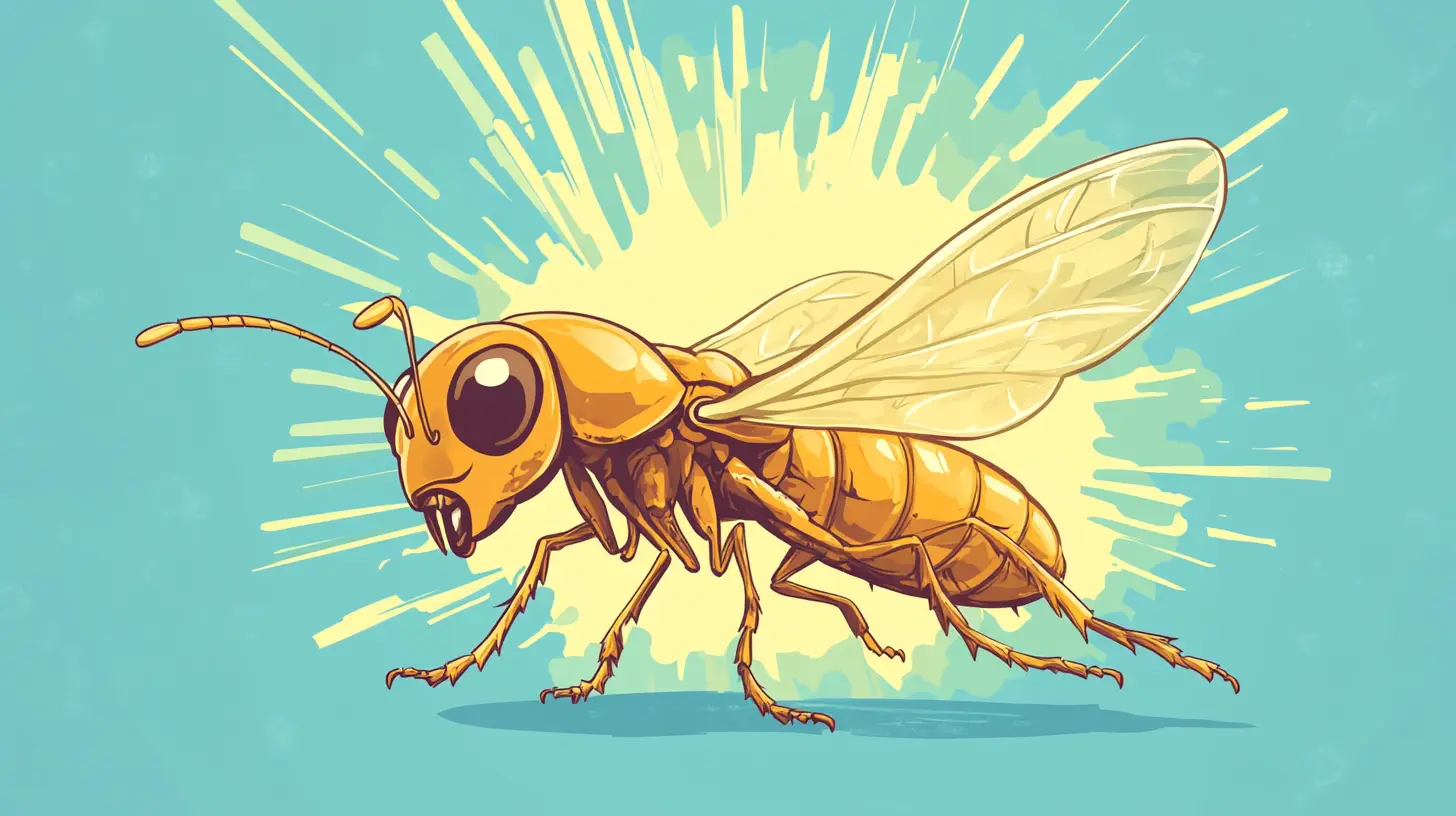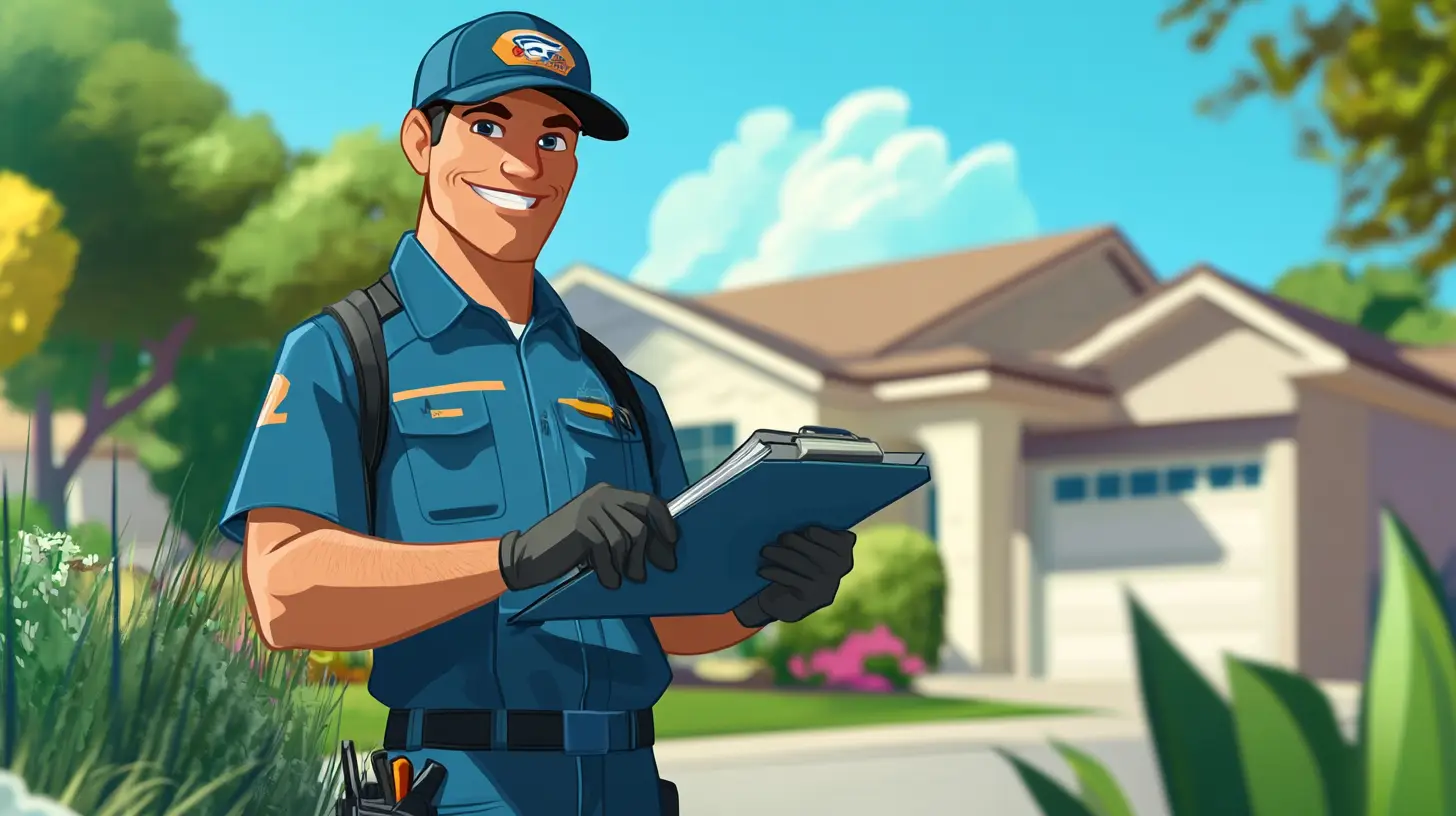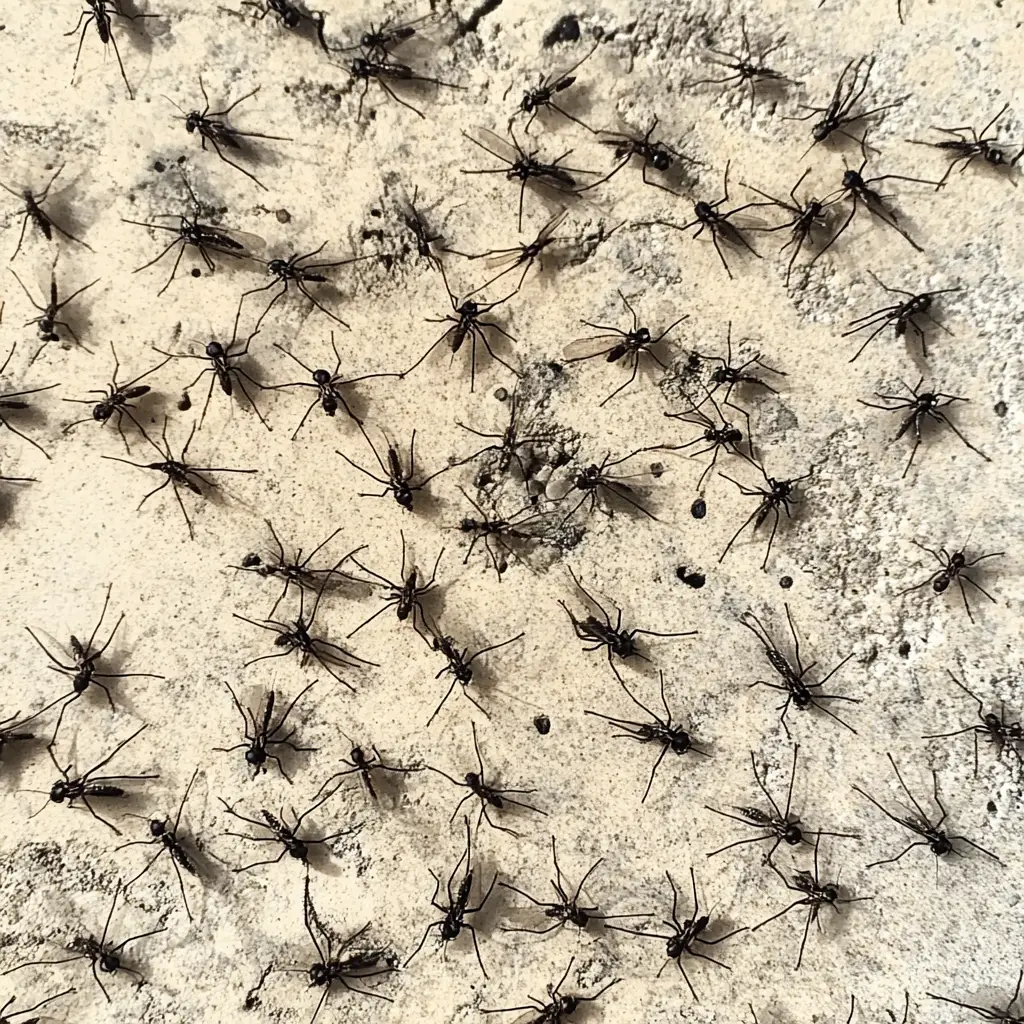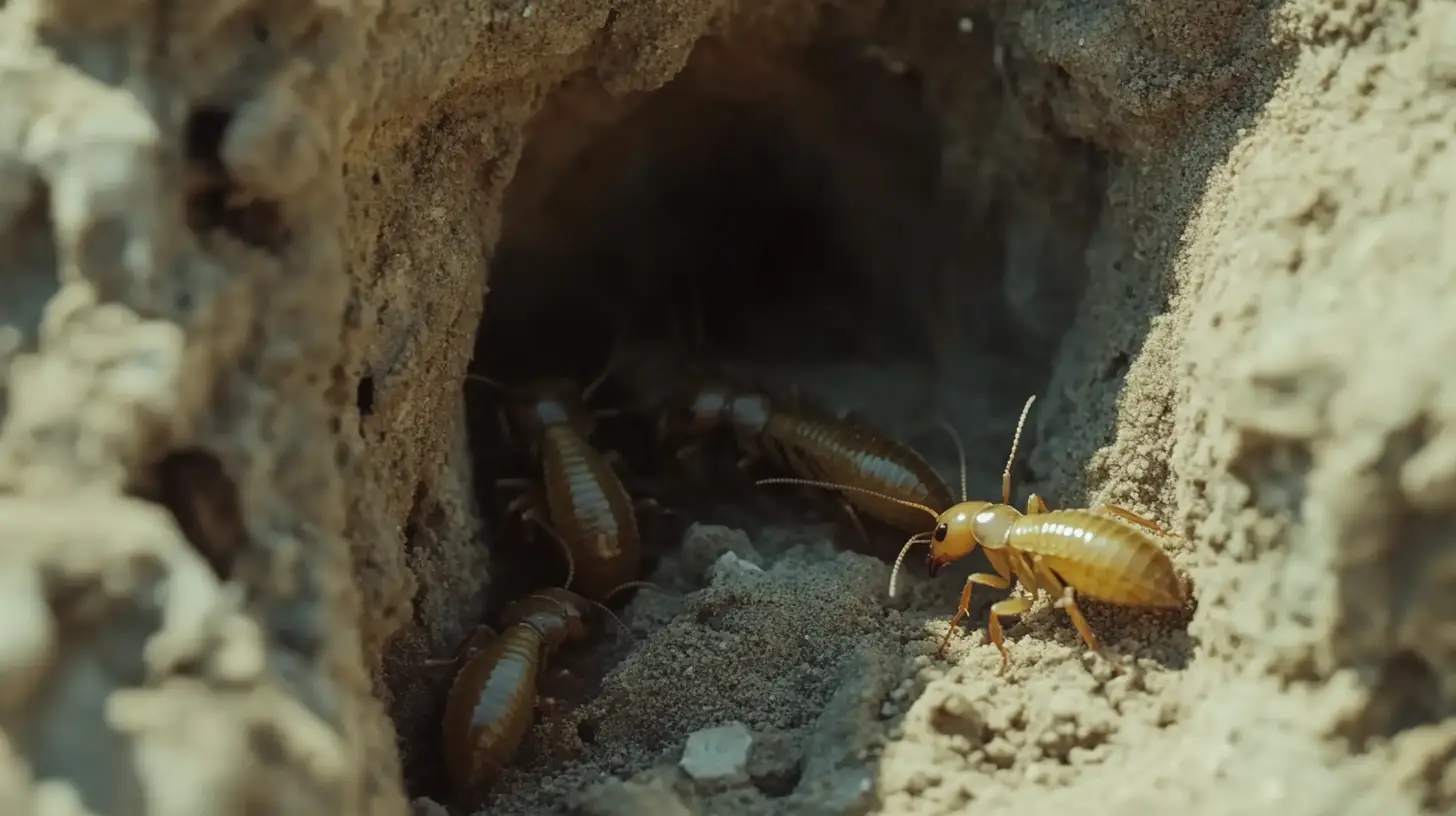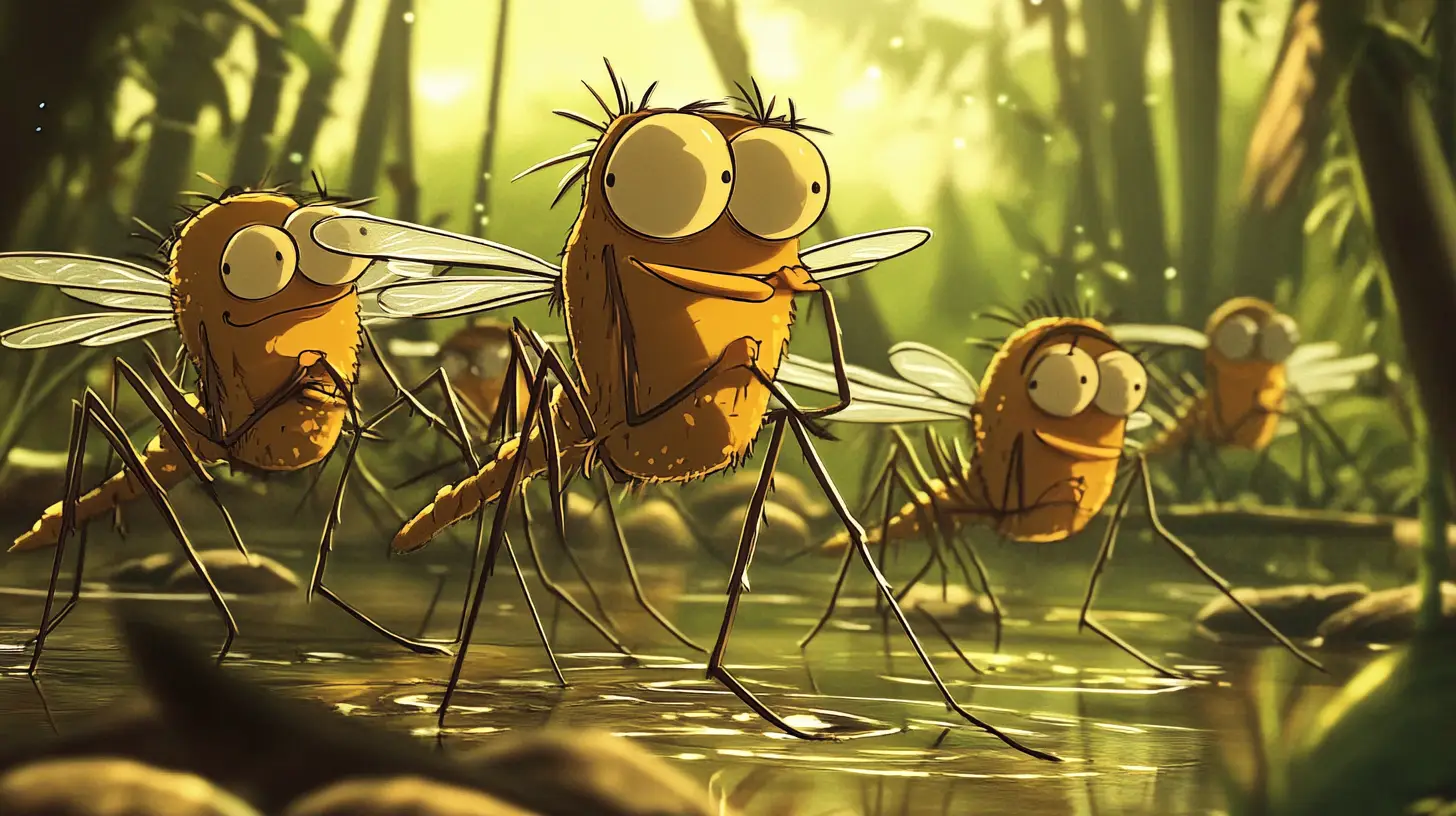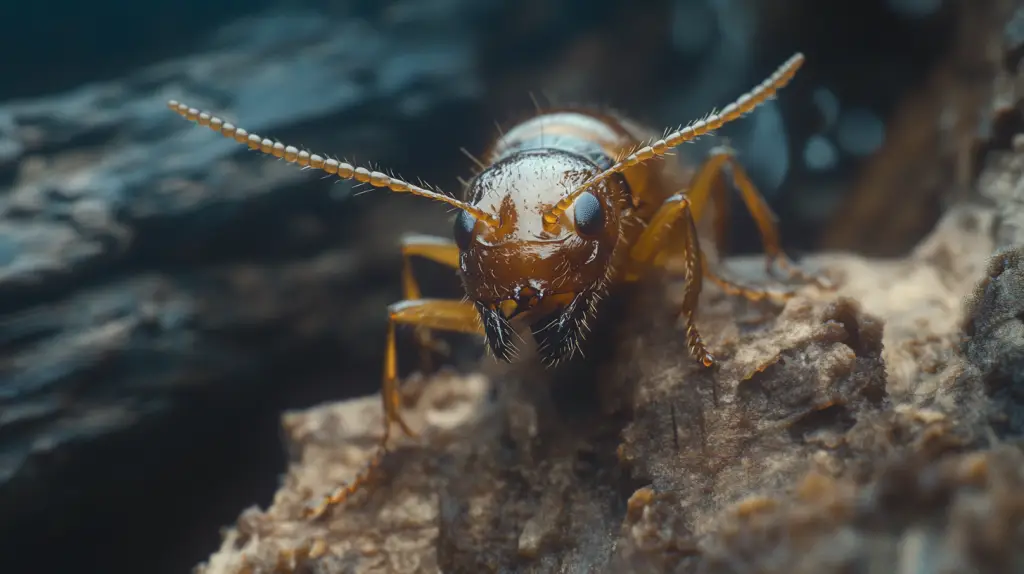
Table of Contents
Dampwood termites, the giants of the termite world, are often the culprits behind such unsettling discoveries. Unlike their drywood termite cousins, these termites thrive in moist wood, often found in areas where wood meets soil. They prefer decaying, waterlogged wood, such as tree stumps, fallen branches, or wooden structures with moisture issues, making them particularly attracted to leaky roofs or pipes.
Dampwood termites are can be persistent, and complete removal often requires expert assistance. If you notice signs of an infestation—such as hollow-sounding wood, mud tubes, or visible damage—taking swift action is key. Whether you’re dealing with a current dampwood termite infestation or want to keep your home protected, to get rid of dampwood termites may require expert termite control.
Key Takeaways
- Dampwood Termites Characteristics: Dampwood termites are the largest termites in North America, characterized by their creamy white to brownish color, large size, and unique pronotum as wide as their heads.
- Preferred Habitats: These termites thrive in moist environments and are commonly found in regions with high moisture content, such as the Pacific Northwest and parts of Florida.
- Infestation Indicators: Early signs of an infestation include soft or hollow-sounding wood, visible damage, dead swarmers, and discarded wings. High moisture areas like leaky pipes and damp basements are particularly susceptible.
- Life Cycle and Behavior: Dampwood termites require high moisture levels and primarily feed on decayed wood. Their life cycle involves multiple molting stages, transforming from larvae to mature workers, soldiers, or reproductives.
- Prevention and Control: Managing moisture levels is crucial for prevention. Promptly fix plumbing leaks, ensure proper drainage, and replace decaying wood. Treatment methods include borate treatments, insecticides, and heat treatment.
What Are Dampwood Termites?
Discovering dampwood termites in your home can be unsettling, especially since these little critters thrive in moist wood, often found around damp areas like leaky pipes or rain-soaked firewood.
Compared to other types of termites, dampwood termites have a higher tolerance for humidity and wet conditions. They are even capable of living in partially submerged wood, making them particularly adept at surviving in consistently wet environments. You’ve spotted signs, but what exactly are dampwood termites?
Characteristics and Species
Understanding dampwood termites, you’ll find they’re quite distinct. Dampwood termites are among the largest termites in North America. The soldiers can be over 20 mm (0.8 inches) long, making them much larger than their drywood or subterranean cousins. The size difference helps them stand out if discovered during an inspection. Their color varies from creamy white to brownish, sometimes even reddish towards the abdomen.
You’ll notice that they have six legs and long antennae. Their bodies are long, narrow, and oval-shaped, which make them distinct. The wings are found on the second and third body sections, and their heads can be up to one-third of their total body length. A standout feature is the large mandibles on the back of their main thorax that can be easily seen when not covered by sheaths. Most body segments of these termites have a straight line across them, enhancing their unique appearance
Dampwood termites possess unique traits. Unlike other termites:
- Moisture Requirements: They need high moisture levels to survive. You’ll often spot them in areas with wood decay because they can thrive in moist wood.
- No Soil Contact Needed: Unlike subterranean termites, these don’t require soil contact, making them capable of thriving purely within wood structures.
- Identification: Correctly identifying them is crucial since treatment methods vary based on species. These termites have a pronotum (collar between head and thorax) as wide as their head.
Dampwood Termites: Characteristics & Control
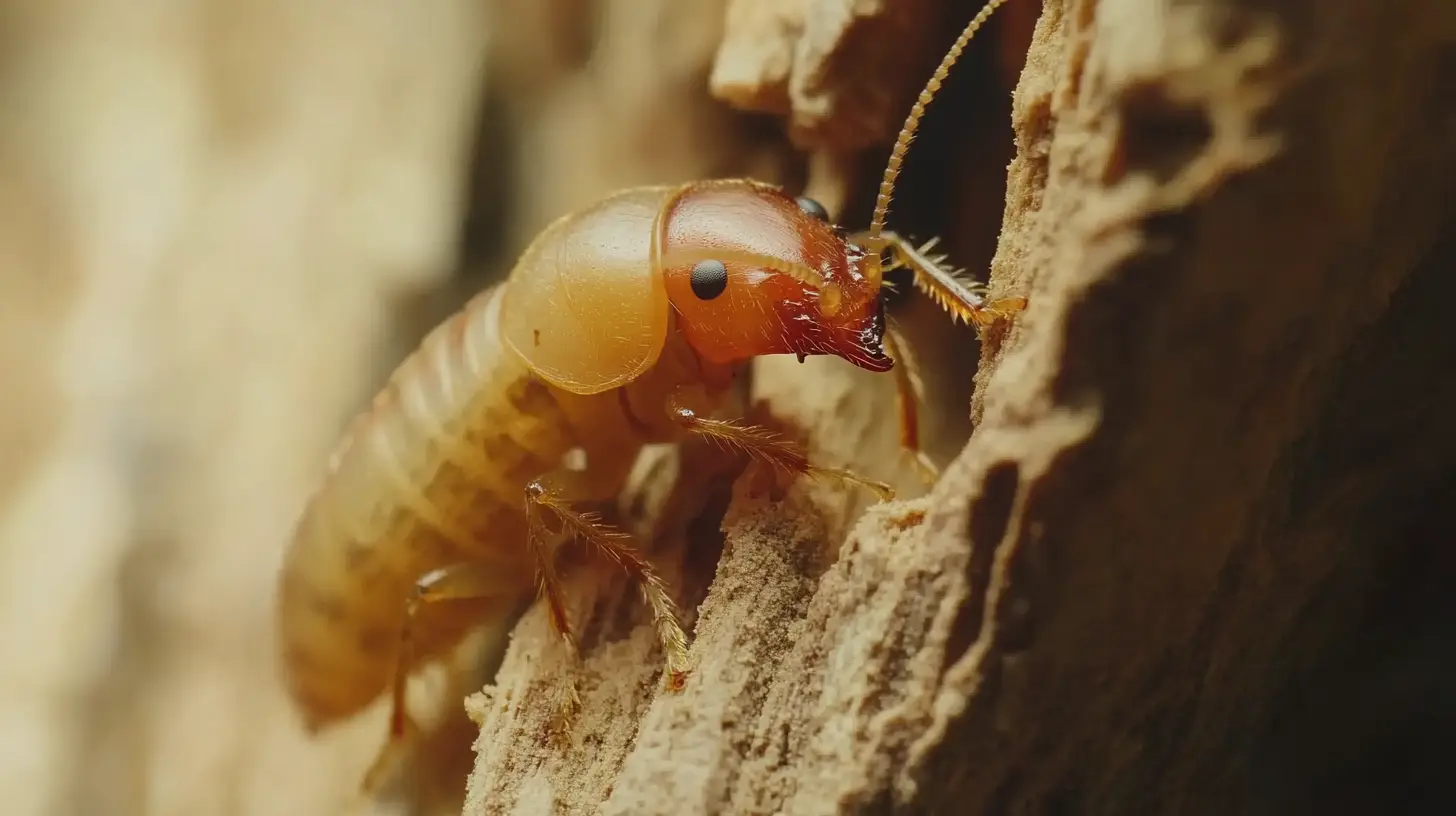
Identification
- Size: Ranging from 1/2 to 5/8 inch (12-16 mm), these termites are notably larger compared to other termite species.
- Color: Usually creamy white to light brown, with slight variations.
- Body Structure: Long, narrow, oval-shaped body with six legs and prominent antennae. Soldiers are characterized by larger heads and powerful mandibles.
Castes
- Reproductives: Kings and queens responsible for growing the colony.
- Soldiers: Guard the colony from threats with their powerful mandibles.
- Nymphs: Handle most of the colony duties, including feeding and maintenance.
Habitat & Behavior
- Preferred Environments: Dampwood termites thrive in areas with high moisture, such as decaying logs, stumps, fence posts, and wood structures affected by leaks. Their distribution is common along the Pacific coast, southern Florida, and arid regions in the southwest U.S.
- Feeding & Nesting: These termites feed exclusively on wood with high moisture content and do not build mud tubes. Instead, they remain inside the wood they consume, creating smooth-walled chambers and covering entry points with feces to retain humidity.
- Swarming: Winged swarmers emerge typically at night, drawn to lights, with swarming activity peaking in late spring and summer.
Health & Structural Risks
Dampwood termites do not pose health threats to humans, but their feeding habits can lead to severe structural damage. Infestations often result in hollowed-out beams and weakened wooden components, which can be costly to repair.
Management & Control
Prevention Tips
- Eliminate moisture sources by repairing leaks and ensuring proper drainage.
- Store firewood at least 20 feet from structures to avoid attracting termites to your home.
- Provide adequate ventilation in crawl spaces, attics, and basements.
Inspection & Professional Assistance
- Regularly inspect wooden components for signs of infestation or damage. Droppings resembling grains of rice are often a clue.
- If an infestation is detected, consult a licensed pest control professional experienced in treating dampwood termites.
Dampwood termites, while fascinating for their specialized habits, can pose a serious threat to any structure with moisture issues. Early intervention and proactive management are crucial to minimizing their impact.
Besides, during their swarming season, their wings become notable markers. They have equal-sized front and rear wings that can help in identifying them. You’ll notice that they have six legs and long antennae. Their bodies are long, narrow, and oval-shaped, which make them distinct.
The wings are found on the second and third body sections, and their heads can be up to one-third of their total body length. A standout feature is the large mandibles on the back of their main thorax that can be easily seen when not covered by sheaths. Most body segments of these termites have a straight line across them, enhancing their unique appearance.
Recognizing these characteristics is vital not just for identification but for understanding the extent of potential termite damage and addressing it promptly. Isn’t it fascinating how such tiny organisms have such specific needs and distinct features?
Dampwood Termites Damage
Discovering dampwood termites early can save you from costly repairs. These pests thrive in humid areas and are the largest termites in North America. Identifying them correctly helps in taking prompt action.
Common Habitats
Dampwood termites love moist environments. You’ll often find them in regions like the Pacific Northwest and parts of Florida where the climate supports their needs. Unlike other termites, they don’t need soil contact to survive. They typically infest damp or water-damaged buildings by tunneling through foundations, plumbing, and walls.
Dampwood termite colonies are generally smaller than those of subterranean termites, typically numbering in the thousands rather than millions. However, their ability to cause damage can still be significant due to the large size of individual termites and their capacity to hollow out wood extensively.
Dampwood termites are highly susceptible to dehydration, which is why they avoid dry wood and prefer moisture-rich environments. If the wood they are inhabiting starts to dry out, the colony often abandons it, highlighting the importance of keeping moisture in check to prevent infestations.
By identifying these common habitats, you can better prepare and take preventive measures to protect your home from these destructive insects.
Life Cycle and Behavior
Dampwood termites thrive in moist environments, making old trees, stumps, and water-damaged wood their prime habitats. Their life cycle and behavior make them uniquely fascinating yet troublesome for homeowners.
Reproduction Patterns
Dampwood termites start their life cycle when the queen lays eggs in moist wood. Think about that decaying tree stump in your backyard; it’s an ideal nursery. The eggs hatch into larvae, which look like soft, white nymphs. These young termites initially rely on worker termites for nourishment but eventually fend for themselves.
The nymphs undergo several molts, shedding their exoskeletons and growing larger each time. Picture a termite shedding its skin in stages until it’s fully grown. This molting can take several months, depending on factors like food availability, colony size, and climate. Once mature, these termites become either workers, soldiers, or reproductives, each serving a specific role in the termite community.
Feeding Habits
You might wonder, what keeps these termites going? Moist wood is their primary food source. Dampwood termites feed on decayed wood that remains moist. If your home has leaky pipes or a damp basement, it could be a feast for them. These termites don’t just nibble; they can hollow out entire support beams.
Think of your home’s structural integrity—dampwood termites can compromise it significantly by feeding extensively on the wood. Their primary diet consists of decaying wood and fungi, found predominantly in moist climates. This specific dietary preference means they infest areas with a high moisture content, such as buildings with leaks or constant dampness.
Understanding the life cycle and feeding habits of dampwood termites helps in recognizing signs of infestation early. Spotting them before they cause extensive damage can save you from costly repairs and keep your home safe.
Signs of Dampwood Termite Infestations
You’re on a mission to safeguard your home from damage, and knowing the signs of a dampwood termite infestation is essential. Dampwood termites thrive in moist, decaying wood, often hidden away in your home’s structure. Spotting the telltale signs early can save you time, money, and hassle.
Visible Damage
Identifying visible damage is a key step. Soft or squishy spots in wood can be a red flag, as dampwood termites tend to make wood feel soft due to their feeding habits. When you tap on the wood and it sounds hollow, you might be facing a termite problem. These termites eat across the natural grain, and the tunnels they create look like finely sanded wood.
You might also find dead swarmers or discarded wings around window sills, countertops, or floors. These swarmers, especially appearing in late summer or early fall, indicate that there may be a termite nest nearby. Look for clumps of frass (termite fecal pellets) stuck to infested areas. Though dampwood termites use frass to seal their tunnels, you can still find these clumps as a clear sign of their presence.
Identifying Signs in Your Home
Moisture problems are a big attractor for dampwood termites. Leaky pipes, poor drainage, and faulty ventilation create ideal conditions for these pests. Ensuring your home is dry and well-ventilated can help prevent infestations.
Swarmers, or flying termites, tend to appear on warm, humid evenings, generally after early rains. They’re smaller swarms compared to other termite species but just as damaging. After mating, they start new colonies in moist wood, which could be in your home if conditions are right.
Also, focus on checking for hollow wood by tapping suspect areas, and look out for visible frass clumps. Addressing moisture issues and removing infested wood are critical steps for termite control. Consider a professional termite inspection for a thorough assessment of dampwood termite activity.
Prevention and Control
Preventing dampwood termites requires managing moisture and applying treatment methods.
Managing Moisture Levels
Dampwood termites thrive in moist environments, making moisture control essential. Fix plumbing leaks promptly and ensure proper drainage around your home to reduce moisture buildup. Replace damaged or decaying wood, as it provides an ideal habitat for termites. By addressing moisture sources and increasing ventilation in crawl spaces, attics, and basements, you create an environment that’s less hospitable to these pests.
Consider the role water diversion plays in termite prevention. By directing water away from your home’s foundation, you reduce the chances of creating damp conditions that attract termites. Gutter maintenance and proper grading around your home can significantly help in this regard.
Treatment Methods
Once moisture issues are resolved, professional termite treatment methods target any remaining termites. Borate treatments, such as disodium octaborate tetrahydrate (Timbor), can be applied to infested wood. These treatments penetrate the wood, killing termites on contact. But, borate treatments can be phytotoxic, so use them cautiously.
For significant termite infestations, insecticides may be necessary. Injecting site-specific insecticides into termite galleries can effectively control the population. Heat treatment is another chemical-free option, where propane heaters raise the temperature inside wood timbers to 130 degrees Fahrenheit and maintain it for an hour and a half. This method kills termites hidden within the wood, but, that heat treatment is less for termites nesting near or below ground.
Summarizing, combining moisture management with targeted termite treatments forms a robust defense against dampwood termites. By staying vigilant and addressing issues promptly, you protect your home from these destructive pests.
Frequently Asked Questions (FAQs)
What do dampwood termites look like?
Dampwood termites are typically brown with a shiny, reddish-brown abdomen. They are about ½ inch long and have six legs. The dampwood termite’s head is pear-shaped or football-shaped.
Do dampwood termites leave frass?
Dampwood termites tend to leave their frass inside their living areas or stuck to the walls of the wood they are eating, unlike drywood termites that leave frass in piles near activity areas.
What causes dampwood termites?
Dampwood termites can infest structures where high moisture levels exist due to plumbing leaks, ventilation deficiencies, or drainage problems. Even old gutters filled with leaves can create an attractive environment for these humidity-loving insects.
How do you get rid of dampwood termites?
Removing the infested wet/damp wood from the structure is essential to eliminate the environment needed for dampwood termites to survive. Homeowners should also fix any conditions that make the area conducive to termite infestation.




